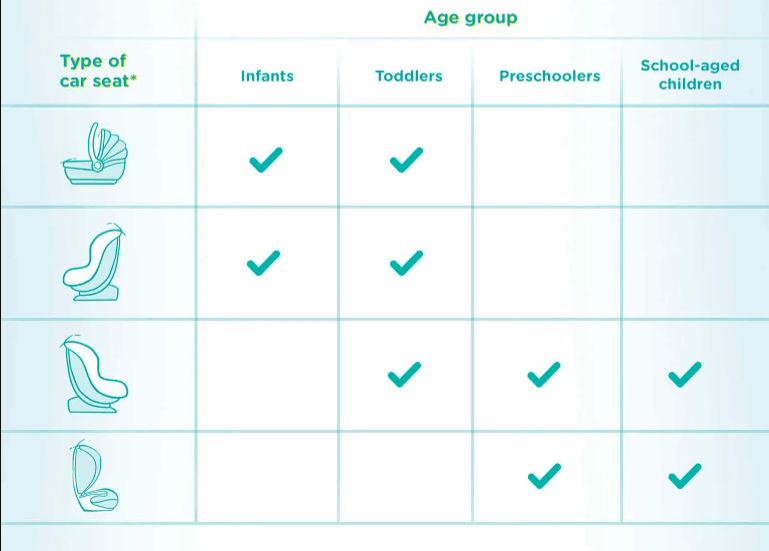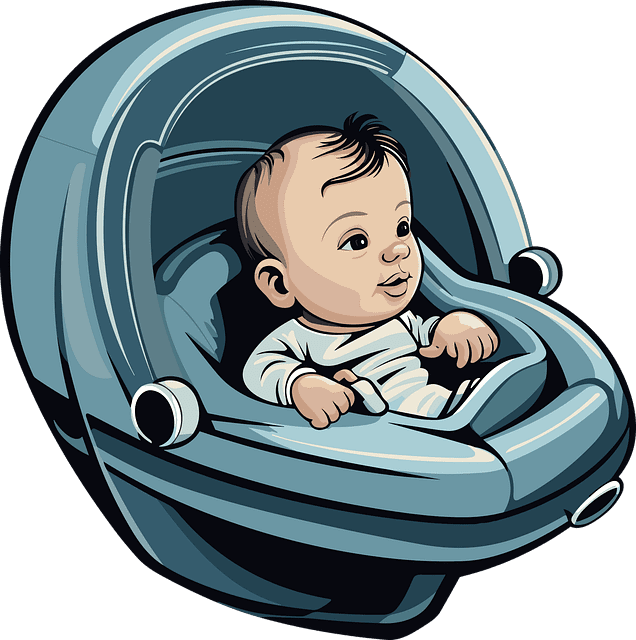Keep your baby safe on the road! Learn all about baby car seats, why they’re important, and the rules you need to follow. Easy guide for worry-free travels!
It’s a necessary tool for keeping your baby safe on the road. As parents, it’s normal to worry about your children’s safety. Twinkles Toys particularly worry when it comes to car tourism. In this complete guide, we will research everything you need to know about baby car seats, from their importance in safeguarding road safety to the legal requirements and regulations that govern their use.
Sympathetic the Importance
Baby car seats play a critical role in protecting our children and toddlers from serious injuries in the incident of a car accident. According to the National Highway Traffic Safety Administration (NHTSA), the use of car seats can moderate the risk of deadly injury by up to 71% for children and by 54% for babies. These statistics highlight the importance of properly putting our children in car seats at all times.
Statistics on Car Seat Success in Reducing Injuries
Numerous studies have verified the success of car seats in dropping injuries. For example, a study published in the journal Pediatrics found that children aged 0 to 3 years who were properly controlled in car seats had meaningfully lower odds of suffering reasonable to severe injuries in car bangs compared to those who were unrestrained or improperly controlled.
Legal Requirements and Regulations
Understanding the legal requirements and regulations surrounding baby car seats is important. It ensures agreement and maximizes safety. Each country or state may have specific laws about the use of car seats. These laws include requirements for age, weight, and height for different seat types. Explain yourself with these regulations. Make sure you use the right car seat for your child and fix it correctly.
Different Types
Baby car seats come in various types. The designers company the different stages of a child’s growth. Let’s explore the 3 main types of car seats. Consider these when choosing the right one for your little one.
Rear-Facing Infant Car Seats
Rear-facing infant car seats are exactly designed for newborns and children. They are made to support babies up to a certain weight and height limit. They support and protect your baby’s delicate body. They provide optimal support in the event of a crash.
Key Features and Benefits of Rear-Facing Seats
Rear-facing seats have several key features. They enhance the safety and comfort of your baby. They are equipped with a five-point harness system. It secures your little one at five different points. These points are both shoulders, both hips and between the legs. This harness design minimizes the risk of ejection during a crash. It also distributes the forces of impact across the strongest parts of the body.
Suitable Age and Weight Guidelines for Rear-Facing Seats
Most rear-facing infant car seats are suitable for newborns. They weigh between 4 and 40 pounds. They are also suitable until the baby reaches the height limit defined by the creator. Once your baby outgrows these limits, switch to a different car seat for sustained safety.
Factors to Consider When Choosing a Rear-Facing Seat


When selecting a rear-facing car seat, it is crucial to consider factors such as ease of connection, compatibility with your vehicle, and user-friendly features. Look for seats with adjustable recline positions. This will ensure a comfortable and safe fit for your baby. Moreover, check for crash test ratings. Ensure the seat meets rigorous safety standards by looking for safety guarantees.
Convertible Car Seats
Exchangeable car seats offer flexibility. The seats can adapt to accommodate both rear-facing and forward-facing positions. Infants as well as toddlers find them suitable, and your child can use them for an extended period as they grow.
Advantages of Convertible Car Seats
The primary advantage of changeable car seats is their durability. You can use changeable seats well into the toddler stage. They can put up babies from birth to almost 40 to 65 pounds. The specific model determines the weight limit. This allows you to get more use out of a single seat, making them a cost-effective option for many families.
Age and Weight Limitations for Convertible Seats
Convertible car seats typically have higher weight and height limits than rear-facing seats. Use the seat in rear-facing mode until your child reaches the detailed weight and height requirements. Then, please switch to the forward-facing mode until they expand the seat’s limits.
Things to Look for When Selecting a Convertible Seat
When choosing a changeable car seat, focus on the ease of installation. Also, consider adjustability and overall comfort for your child. Look for seats with a user-friendly connection system. It allows you to install the seat in your vehicle without hassle securely. Adjustable recline positions and a well-padded interior are important for your child’s comfortable long car rides.
Booster Seats
Booster seats are designed for older children. They have expanded the changeable car seat. They still need an extra boost to proper seat belt placement.
Understanding the Purpose of Booster Seats
The main purpose of booster seats is to position the child correctly in the seat. This allows the seat belt to effectively lock up and protect them in the event of a crash. Supporter seats elevate the child. They align the seat belt with their shoulder and hip bones, reducing the risk of injury.
Age and Weight Requirements for Booster Seats
Most states require children to remain in a booster seat until they reach a certain height, weight, or age. The age and weight requirements may vary. Naturally, children should remain in a supporter seat until they are around 4’9″ tall and between 8 and 12 years old.
Essential Features and Considerations for Booster Seats
When choosing a booster seat, focus on features such as adjustable headrests and high back support. These features provide proper fit and comfort. Look for booster seats that have been carefully tested for safety. They should meet or exceed national safety standards. Additionally, consider lightness and compatibility with different vehicles, especially if you frequently switch cars or travel.
Selecting the Right Baby Car Seat
Choosing the right baby car seat involves evaluating safety features. It also involves considering comfort and convenience. Let’s explore these factors in detail.
- Assessing Safety Features
Ensuring the safety of your child is of paramount importance when selecting a baby car seat. Here are some safety features to consider:
- Five-Point Harness Systems
Five-point harness systems secure your child at five different points. This minimizes the risk of discharge and distributes the impact forces during a crash.
- How Five-Point Harnesses Enhance Safety
Five-point harnesses provide superior protection. They keep a child’s body properly positioned in the seat at all times. This reduces the risk of injury and ensures maximum safety.
- Importance of Properly Adjusting Harness Straps
Proper adjustment of the harness straps is crucial for optimal safety. Straps should be comfortable but not overly tight. You should be able to fit a finger between the strap and the child’s collarbone.
- Evaluating the Quality and Durability of Harness Systems
When selecting a car seat, pay attention to the quality and durability of the connection system. Look for seats made of sturdy materials. The straps should be easy to use and the product should be known for its longevity.
- Side-Impact Protection
Side-impact collisions can be particularly dangerous for children. Car seats with side-impact protection offer extra safety methods. They cut the risk of injury.
- Exploring the Significance of Side-Impact Protection
The designers create side-impact protection systems. These systems absorb and disperse crash forces away from the child’s delicate body. They reduce the risk of injury to vital areas such as the head and torso.
- Different Side-Impact Protection Technologies
Various technologies are employed in car seats to improve side-impact protection. These can include energy-absorbing foam layers, deep side wings, and adjustable headrests.
- Considering Crash Test Ratings and Safety Certifications
Before you buy a car seat, you have to research its crash test ratings and safety certifications. Look for seats that have been tested and approved by free organizations. Examples include the NHTSA and the Insurance Institute for Highway Safety (IIHS).
LATCH System
The Lower Anchors and Tethers for Children (LATCH) system is an alternative method for securing car seats to the vehicle. It does not use the seat belt.
- Understanding the LATCH Installation System
The LATCH system consists of lower anchors in the vehicle seat. It also has tether anchors located on the back of the vehicle seat. Car seats prepared with matching connectors can be easily attached to these anchors.
- Installation Procedures and LATCH Weight Limits
Follow the car seat and vehicle owner’s manual for specific instructions. Use the LATCH system to install the seat. It is important to ensure that you do not exceed the weight limits specified by the manufacturer for the LATCH system.
- Benefits and Problems of the LATCH System
The LATCH system provides a secure and convenient method of installing car seats. Still, some vehicles have weight limits for the LATCH system. You may need to switch to the seat belt installation method for larger, heavier children.
- Proper Installation and Usage of Baby Car Seats
Fitting and using a baby car seat correctly is crucial for optimal safety. Let’s explore the proper techniques for installation and usage.
- Reading and Understanding the Car Seat Manual
It’s important to read and understand the car seat manual. This ensures proper installation and usage of the seat.
- Importance of Reading the Guide Carefully
Each car seat has specific installation instructions, usage guidelines, and maintenance requirements. Explain yourself with these details. This is the key to your child’s safety.
- Safe Installation Instructions and Tips
The car seat manual provides step-by-step instructions for correctly installing the seat in your vehicle. Follow these instructions carefully to ensure a secure fit and optimal safety.
- Proper Harness Adjustment and Fit
The manual also guides adjusting and fitting the bind properly. Take the time to learn how to adjust the harness straps to ensure a secure and comfortable fit for your child.
- Maintenance and Lifespan Guidelines
The guide contains important information about the lifespan and maintenance of the car seat. It will provide guidance on when to replace the seat and how to properly care for it over time.
- Correct Installation Techniques
Proper installation techniques vary depending on the type of car seat. Let’s explore the installation procedures for rear-facing, changeable, and booster seats.
- Installing Rear-Facing Seats
The installation process for rear-facing car seats includes securing the seat to the vehicle. You can use either the seat belt or the LATCH system.
- Step-by-Step Rear-Facing Installation Process
- Consult the car seat manual and vehicle owner’s manual for detailed instructions.
- Position the seat in the rear-facing position according to the builder’s guidelines.
- Attach the seat to the vehicle securely using either the seat belt or the LATCH system.
- Make the seat belt or LATCH system straps until there is minimal movement of the seat from side to side and front to back.
- Double-check the installation by giving the seat a firm tug to ensure it is secure.
- Verifying the Seat is Securely Installed
After installing the seat, confirm that it is securely installed. Perform a systematic check. Push and pull the seat from various angles to ensure minimal movement.
- Common Mistakes to Avoid During Rear-Facing Installation
During rear-facing installation, avoid some common mistakes. These include an improper seat angle, a loose installation, or a failure to secure the seat tightly to the vehicle.
- Checking for Proper Harness Fit and Adjustment
Ensuring the proper fit and adjustment of the connection is essential for your child’s safety while traveling in a car seat.
- Assessing Harness Height and Tightness
Position the harness straps at or below the child’s shoulders for rear-facing seats. For forward-facing seats, they should be at or above the shoulders. They should be tight enough to avoid unnecessary movement. They should not be so tight that they cause discomfort.
- Common Errors in Harness Adjustment
Common errors in harness adjustment include loose straps, twisted straps, and wrong clip placement. Take the time to ensure that the harness is properly adjusted each time you secure your child into the car seat.
- Directing Regular Harness Fit Checks
Regularly check the fit and adjustment of the harness as your child grows. Make the necessary adjustments to ensure a secure and comfortable fit.
- Maintenance and Care for Baby Car Seats
Proper maintenance and care for your baby’s car seat ensures its durability. They also ensure its effectiveness in providing safety and comfort for your child. Let’s delve into some essential maintenance tips.
- Cleaning and Washing Car Seat Covers
Car seat covers can become soiled and stained over time. Proper cleaning ensures that your child’s car seat remains clean and comfortable.
- Materials and Fabrics That Are Easy to Clean
When selecting car seats opt for materials and fabrics that are easy to clean. Removable, machine-washable covers are highly recommended. They can be easily removed and cleaned as needed.
- Tips for Removable and Machine-Washable Covers
Follow the builder’s instructions for removing and washing the car seat cover. Use gentle detergents. Avoid harsh chemicals that may damage the fabric or compromise the seat’s honesty.
- Gentle Cleaning Methods for Non-Removable Covers
For non-removable covers, use a mild detergent or a solution of water and vinegar to spot clean. Softly mark the stain or soiled area with a clean cloth, taking care not to Read More Baby Twinkle Toys





Pingback: A Simple Guide to Preparing for Your Baby's Arrival - Twinkle Toes | The Best Baby Products Info